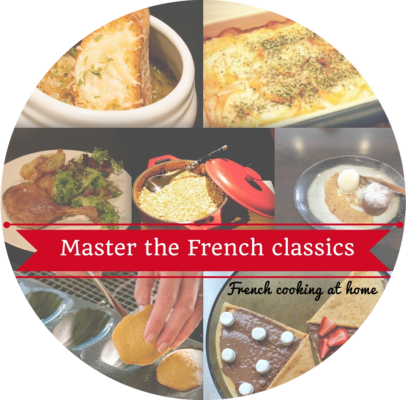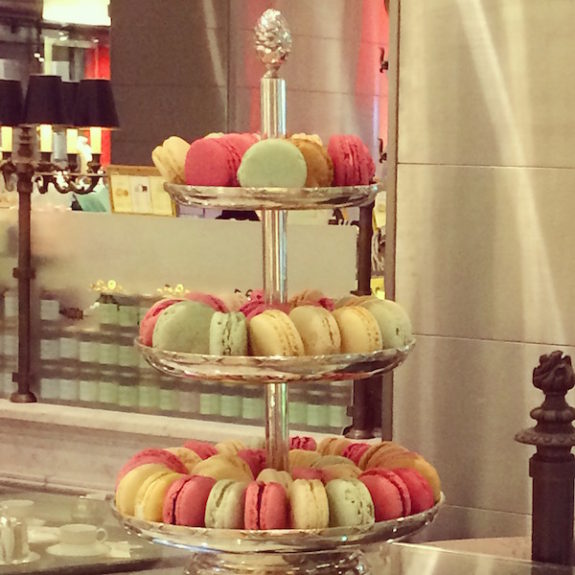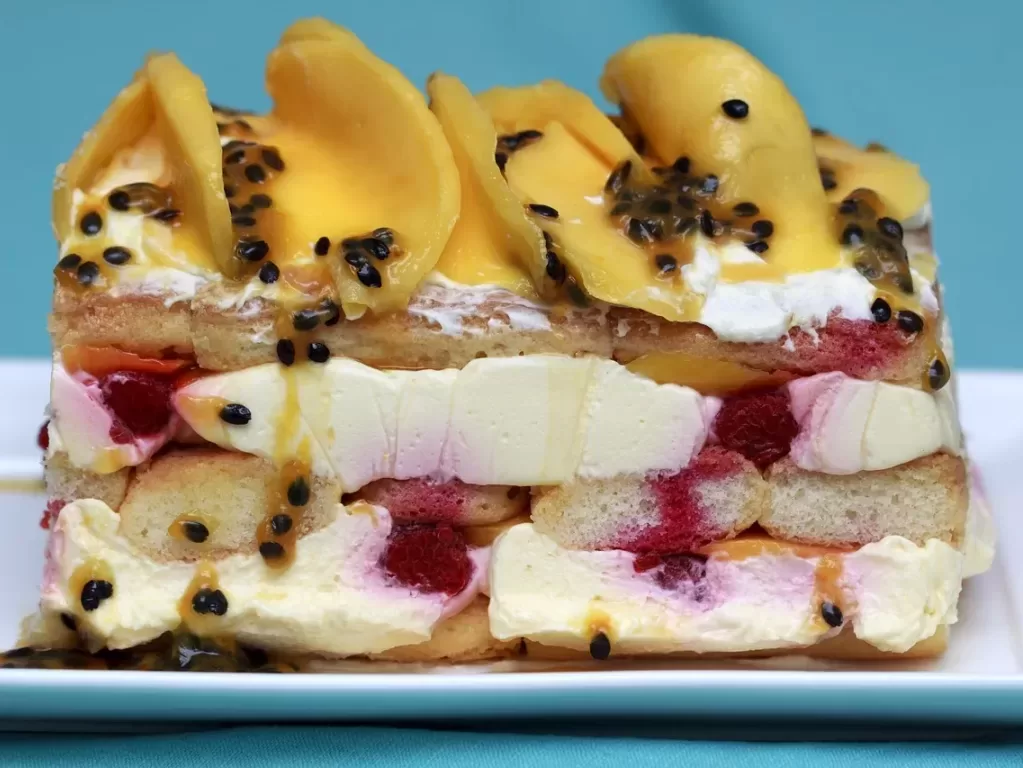Mastering classic French cooking at home: Macarons
Oh, to have a repertoire of French cuisine classics that you can whip up at home and know that they’ll be fantastic – every time!
Have you always dreamed of mastering French cuisine? Years ago I attended a course with Le Cordon Bleu in London and I have a very early (1978) copy of Julia Child’s ‘Mastering the Art of French Cooking‘, now very yellow and food stained by successful and not so masterful attempts!
Like many of you, I’ve also read the book and seen the 2009 film Julie & Julia, with Amy Adams as Julie Powell and Meryl Streep as Julia Child. Upon hearing about Powell’s attempt at replicating all her recipes, Child was reported to have been unimpressed, viewing Powell’s attempt to be a stunt, and that Powell wasn’t serious about doing it.
We’re passionate about continuing the challenge of mastering classic French cooking at home without having professional training.
In this series we bring you tips and recipes from others who share our passion.
Back in the kitchen with Janelle

Janelle says: “Although I couldn’t tell you exactly who it was, I remember someone telling me once that macarons – those gorgeous jewel-like French sweet treats – were just a passing fad.
That was about ten years ago now.
At this point in time I’m prepared to make a call and say that whoever they were, they were wrong. Macarons are as tempting and as popular as ever. And little wonder. Why would anyone want to pass up a chewy mouthful of glossy, crispy biscuit sandwiched together with tasty ganache?
For me, a macaron is the perfect sweet pleasure. They are small, gorgeous to look at and quite satisfying. They are indulgent without being too indulgent, if you know what I mean.
Given my love of macarons it was probably inevitable that I would decide that I had to learn to make them at home. Yes, I knew they would be fiddly and probably very messy but I was committed to my favourite French treat. However, I was pretty disappointed when I started researching recipes. Every one I looked at just didn’t work for me. They either seemed too difficult or lacked the detail I felt I needed. I became increasingly frustrated.

It turns out that this unassuming little book was a miracle worker. It contained many secrets and took all the mystery out of making macarons. Sadly, the ‘zine’ did not name the author and the only clues I have as to the person responsible for my ability to create macarons are the words Bexley and Felix. But I guess this post is my opportunity to thank whoever it was that penned ‘Macarons Are Not Macaroons’.
Ironically, it is probably Cal who has baked the majority of our macarons over the years. He has pretty well nailed them and generally still sticks to the original ‘Macarons Are Not Macaroons’ recipe. I was more than grateful when Cal surprised me recently with his interpretation of the ‘Macarons Are Not Macaroons’ recipe.
He had been thinking that I might like to share it with the Distant Francophile readers…and he was absolutely right.
Now, please don’t be intimidated by the steps in the recipe. With the right tips, macarons really are a French classic you can master at home.
Macarons
French Macarons – Cal’s Interpretation Of The ‘Macarons Are Not Macaroons’ ‘Zine Recipe.
Ingredients
- 3 large egg whites
- 85g of Almond Meal
- 150g of pure icing sugar (make sure it is pure icing sugar because other products may have starches and other additives which will mess with the recipe)
- 65g of caster sugar
- Any colourings you may want to add (you can use liquid colourings, but be aware that they fade during the cooking time. To avoid this, you can use powdered colourings which retain more of their vibrancy)
- Any flavourings you may want to add
- Any ingredients you need for the filling in the middle
Equipment
Macarons require a lot of organisation, so have these things ready to go to save scrambling for them later:
- A hand mixer or a stand mixer
- 2 large mixing bowls or 1 mixing bowl and the 1 from your stand mixer
- A food processor to grind the almond meal and icing sugar together
- 2 baking trays
- Baking paper
- A piping bag with a reasonably large nozzle, around 2cm in diameter (definitely use a nozzle, without it the macaron mix will come out of the bag very unpredictably)
- A small circular object you can use as a template for piping equal sized circles such as a milk bottle lid and a pencil
- A sieve or sifter
- A silicon spatula
- Scales or measuring cups
- A cooling rack
Now that you have all of that ready you can start cooking.
Method
- Take the baking paper, your circular object, and your pencil. Cut the baking paper to the right size for your trays so that there is no overhang. Trace around the small object on the back of the paper (make sure it isn’t the shiny side of the paper or the graphite from the pencil will transfer onto the macarons during baking) to give you a piping guide for the macaron batter. Make sure the circles are about 3 cm apart. Make a couple of these sheets as this recipe normally makes enough for 2 trays of macarons. Put one of the sheets shiny side up on one of the trays, and then stack that tray on another empty tray. Doubling the trays makes the heat spread better and keeps the bottoms of the macarons from burning.
- Pour your almond meal into the food processor and grind it until it is even finer, but not to the point that it begins to stick together. Slowly pour in the icing sugar and grind until the two are well incorporated and fine. Check that the mixture isn’t sticky. If you find that it is, add more icing sugar until it has a powdery consistency.
- If you are using powdered colourings or flavourings such as coffee or cocoa, add them now (just a little as not to drastically change the consistency of the mix).
- Sift the dry mix into one of the mixing bowls, then sift it back into the other mixing bowl (if you are using your stand mixer, make sure this is the second bowl), and then sift it back into the first bowl. This will help refine the mixture.
- Wipe out the empty mixing bowl or stand mixer bowl thoroughly to make sure there is no residual powder on the sides. Put your egg whites in and beat them until they begin to get frothy, then gradually add the caster sugar. This should result in a nice stiff meringue. If you wanted to add any liquid colourings or flavours, now would be the best time, but use a light hand, as too much liquid will damage the structure of the egg whites and make them unusable. Just a splash or two!
- Once your meringue mixture has formed very stiff peaks, add half of your almond-sugar mix and gently fold it in with your spatula. Once the dry ingredients are incorporated into the meringue, add the second half of the dry mix and keep folding. Be thorough and don’t worry too much about being gentle. You want the batter to be stiff, but also slide a little so you can pipe it easily.
- Fill the piping bag with the batter, using a large jar or canister to hold the bag in place while you scoop it in. I recommend putting a few twists in the bag near the nozzle or your batter will just slide straight out. Once the bag is full, remove it from the jar and hover it over the baking tray with the circle templates in position. Put the centre of the nozzle in the centre of the circle and squeeze. This should evenly fill the circle with batter, resulting in a nice round macaron. Release tension on the piping bag and lift up, which should stop the flow and result in a little flick at the top of the macaron. Watch this little flick, because if it doesn’t slowly fade back into the macaron you may need to scrape the batter back into your bowl and mix again.
- Once the macarons are piped, take the baking trays over to a sturdy flat surface, and while holding the paper down so that it doesn’t slip, smack the tray down hard a few times. This may seem a bit dramatic, but it knocks the air bubbles out really effectively leading to more even cooking and less chance of the inside of your end product being hollow. Leave them to settle for half an hour or until they are almost dry to touch. As tempting as it is, do not skip this waiting time, because it is part of what makes them lift up when they cook!
- During the waiting time, preheat the oven to 150 degrees. When the waiting time is up, put the macarons in the oven for about 16 minutes. After about 2 minutes you should see that the macarons have risen slightly around the base. After about 8 minutes, turn the tray around inside the oven so that heat is distributed well. Put the tray back in for another 8 minutes. Take them out of the oven and attempt to slide the baking paper off the trays and transfer it over to the cooling rack. If you aren’t feeling confident about doing this without damaging the macarons, don’t worry, it’ll just take longer for them to cool and as such take longer to get your second tray in the oven.
- Once the trays are completely cool, place your second template sheet on the tray and pipe out the remaining batter into the circles. Repeat steps 7 and 8.
- Once the macarons are all cooked and cooled, it is time to assemble the macarons. Match the biscuits that are similar in shape and size and then sandwich them together with your choice of filling. Our favourite filling is probably a simple butter cream, however you can use chocolate ganache, jam or even salted caramel.
- Enjoy!
Thank you Janelle!
Editors note: some internet sleuthing has revealed the author of ‘Macarons are not Macaroons’ to be Becksley Felix who has since published another ‘zine called ‘Ganache Is Not Spelt Ganash’.
Do you have a preferred recipe to follow when making these tempting treats? What’s your favourite macaron filling? Share your thoughts and experiences with us below!
Indulge yourself with more delicious recipes in our series of how to Master French Classics…
Moelleux au Chocolat // French Onion Soup // More to come soon…
Image Credits:
1. Collage of images taken by Scott Gould
2. Janelle and Scott by Carla Coulson
3. ‘Macarons are not Macaroons’ by Becksley Felix, via NGA Space Invaders site
4. Macarons by Scott Gould









Thank you for sharing. I have always been interested in them! I love baking but when i was thinking about macarons I even didnt want to start and get them wrong so thank you for sharing all those tips!
I have a friend in Paris now. Yesterday she attended the Cordon Blue program on Macarons. At the Cordon Blue they consistently spell Macaron Macaroon and it seems they are the only source that does. Why are they different? It is really bothering me.
Carol this is such a good question. We believe that a Macaron is a meringue and a macaroon is an almond.coconut biscuit. We’ve emailed to ask our friends at le Cordon Bleu in Paris… Thanks for raising this with us
Dear Carol,
The globalization of the gastronomic scene over recent years has led to increased and more comprehensive exchanges between French and world cuisines and many misconceptions. The spelling of the word Macaroon is one of those. Le Cordon Bleu has chosen to use the original English language spelling with “OO” conforming with references like The concise Larousse Gastronomique © 1988 & 2001 English edition Hamlyn a division of Octopus Publishing group Ltd, Reader’s Digest Complete guide to cookery © 1989 Dorling Kindersley Limited, London and Wiley’s Professional baking / Wayne Gisslen 5th Edition © 2009.
Macaroons, the small petits fours with a crunchy exterior and soft interior, have a long history in France and Italy, and many people are unaware that so many varieties of macaroons exist. The recipe and name for this pâtisserie dates back to the Renaissance era in Venice, where they were called macarone. According to some historians, macaroons have been made in the monastery at Cormery (France) since 791. Certain towns in France are famous for their macaroons, particularly, Montmorillon, Niort, Nancy, Reims, Pau, Merlun and Amiens. Cormery macaroons are piped to form a ring, those from Amiens have egg yolk in the batter and are shaped like a hockey puck (palet), St Jean de Luz and Saint Emilion produced flatter versions and those from Nancy have a cracked top.
Yet, when we mention Parisian macaroons, or “gerbets”, they date back to the 20th century and are filled. They are made using either French or Italian meringue, and became a sensation in France when Pierre Hermé started to experiment with the gerber macaroon fillings in the 1980s. Today these macaroons are famous worldwide.
Le Cordon Bleu Paris team
I have Julia Child’s book and cannot find macaroon’s recipe. Do you think you can tell me which page it is on? Thanks a lot.